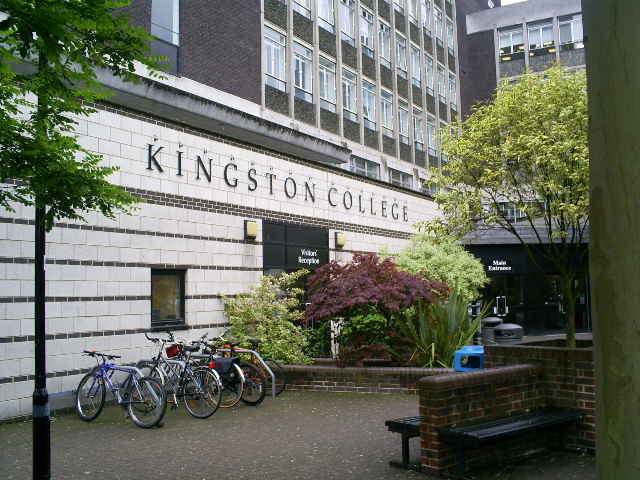The job market for 16-25-year-olds in Kingston has continued to struggle post-Brexit.
Kingston as a borough has one of the lowest rates of youth employment in general so the figures are comparable to more deprived areas in London and the UK.
Trends have shown that since 2013 rates of unemployment have gone down, under 200 per year up until the point of COVID-19 which saw a lot of individuals placed on furlough.
The reason this is more detrimental to younger persons appears to be that they generally find themselves in more dispensable areas of employment due to their perceived lack of experience to employers.
Youth employment has entered an unstable period in the last ten years as the post-brexit and COVID effects on the economy has seen employment based figures to significantly fluctuate.
Clive Lissaman, the careers officer at Kingston College, explained the difficulties the youth face in seeking vast employment stems from a lack of funding as well as poor governmental management in the post-pandemic period.
He said: “London is far eclipsed by the number of students that want to do those apprenticeships.
“In London, only 7% of employers, according to a report commissioned by the Great London Authority that was published in August, only 7% of employers are prepared to offer apprenticeships for young people so the numbers just don’t add up.
“The pandemic has resulted in a lot of businesses actually going under, however, it was a lot of the small businesses, but when the economy kind of picks up again, new companies actually fill the gaps.
“I don’t think that had an impact. I think the deeper problem would actually be Brexit, it had a much, much deeper impact on the labour market.
“The notion was that there was sort of like a romantic idea that somehow if you sort of stopped immigrants coming in or people from Europe coming in, that there would be loads more jobs.”
There is no simple explanation as to why this is the case but a myriad of problems through several top-down decisions and the changing economic climate seem to have eroded current career opportunities for the youth of today.
Kingston Council has attempted to do something to mitigate the figures that we have seen, through a variety of schemes and initiatives such as Kingston Council’s £2 million investment during the pandemic to help swerve growing rates of unemployment.
The borough proves an informative case-study in that it shows how even the most affluent of areas have been affected in terms of making use of education services to influence job prosperity.
This can be attributed to the economic crisis the country faced at the time as a prolonged effect of the pandemic, but the data really lies in the fact that 2022 marked the lowest amount of youth unemployment in 30 years until we saw substantial change be initiated.
What the data tells us
Claimants for unemployment reached their lowest point of the last ten years in 2016, but slowly saw a steady increase up until the pandemic, that even now is failing to stagnate and is simply getting worse again.
(Source – ONS Claimant count by age)
NB : out-of-work claimants are usually for individuals seeking employment but cannot find it, separate allowances are given to those who cannot work for other reasons (Universal Credit e.g)
NB: numbers are averages of out of work claimants as a proportion of resident population of the specified
The lineage of out-of-work claimant statistical averages suggests that the decline of employment prospects for young persons happened a lot sooner than the start of the pandemic, specially the post-Brexit period.
Though there have been peaks and troughs in unemployment rates, we seem to be in a worse financial position than ten years ago, with the lowest out of work claimant averages coming pre-2019.
When the job market declines there is an inevitable dip in the availability of small businesses which we see decline at a gradual rate rather than being immediate.
This is demonstrated by the averages produced by the claimant averages which are split into two groups respectively – 16-18 year old’s and 18-24 year old’s.
The rationale behind using these two groups is that the ages of 16-18 can evidence the struggles of those who leave school to do apprenticeships or seek full time employment.
The 18-24 year old statistical averages paint a clearer picture of the longer term effects of those who have struggled to either utalise their studies or who have gone down the employment route at an earlier stage.
Lissman feels as if local councils could play more of a part in funding colleges and universities in the area, while new educational schemes have not run as smoothly as anticipated.
He added: “Councils have either creamed off the money for other projects or for whatever reason, have just not sort of invested that money into skills.
“For example, in Kingston, Unilever is a multi-multi-million pound project, and it’s opposite the college, and during the construction process, 10,000 students would pass through the college, yet only one student ended up with a job with a contractor on that project.”
It reflects a long standing structural problem in the educational pyramid doubled down by an uncertain post-Brexit and post-COVID economy.
The figures Lissaman provided on behalf of the college are consistent with the government’s out-of-work claimants statistics, subject to the economic patterns across the last ten years.
He fears, however, that this situation will get worse before it gets better.
He explained: “We’re all invested in this, we should be invested in it. It’s vital that we’re invested in this.
“We’re kind of in that sort of really weird moment in terms of the broader psychology of we’re at a cul-de-sac with a lot of these things.”
Economic inactivity totals proved unsuitable for this analysis as many borough-based figures are unaccounted for because sample sizes are considered too small for a reliable estimate.
However, economic inactivity totals for students and young persons across the borough and the city last year paint a broader picture of the challenges in seeking employment compared to pre-Brexit totals.
While we see figures drop for the total population, student population unemployment has grown massively and works against the general notion that as time advances job sectors have created more jobs for all.
Brexit seems to be the catalyst for this change as the economic inactivity totals have incrementally climbed since the referendum succeeded, in line with Lissaman’s claims.
Featured image credit: wwphotos via Flickr under CC BY-NC-ND 2.0 licence





